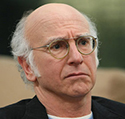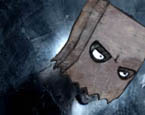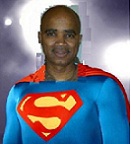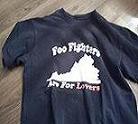David Levine
Posts: 80027
Joined: 7/14/2007
From: Las Vegas
Status: online

|
Yeah, But Can He Make It in the Pros?
Johnny Manziel lacks the arm strength, the build and the choir-boy image, but watch him shred Nick Saban’s Alabama defense and it’s clear he has a future in today’s NFL
By Greg A. Bedard
COLLEGE STATION, Texas — Nearly an hour and a half after top-ranked Alabama had finally rid itself of No. 6 Texas A&M with a 49-42 victory on Saturday, well after five buses filled with Crimson Tide players, coaches and support staff left for the airport, Nick Saban finally emerged from the cramped visitor’s locker room at Kyle Field.
After doing several interviews—all in the name of recruiting—Saban had cleaned up and looked as sharp as ever. He wore a red tie, a tweed sports coat and beige slacks, and his hair was neat yet still a little damp in the hot and humid late afternoon sun beating down on East Texas. But even a refreshing shower couldn’t mask the toll of the 210-minute battle that had just taken place. Away from the throngs, the coach who has always looked much younger than his age—especially when I covered his NFL foray with the Miami Dolphins in 2005 and ’06—now for the first time looked his 61 years. The lines ran deeper in Saban’s face, and his eyes were glassy. He looked whipped, as if he had just spent 12 rounds chasing Floyd Mayweather around a boxing ring.
In some ways, Saban had. Despite devoting countless film sessions, chalkboard talks and practices over several months to preparation for this very game, the man whom New England Patriots coach Bill Belichick consults about defense watched Aggies quarterback Johnny Manziel make Alabama’s NFL prospect-filled, precision-drilled defense look like the Washington Generals.
By the time it was over Manziel had racked up 562 total yards—second only in SEC annals to the 576 he had against Louisiana Tech last year—and the Crimson Tide had given up the most yards (628) in its mostly glorious 122-year history of playing the sport. Last November, Manziel handed Alabama its only loss, a 29-24 defeat at home in which he threw for 253 yards and two touchdowns and ran 18 times for 92 more yards. Forget about stopping him; Saban couldn’t even slow him down. Last weekend Manziel threw for 464 yards and four TDs, and added another 98 on the ground.
Sweet Georgia Brown.
The season will play out for the Crimson Tide and Aggies. But the future is already calling for Manziel, the 2012 Heisman winner, who as a third-year sophomore this season would be eligible for the NFL draft next May. It leads to one natural question to ask of Saban: Do Manziel’s talents translate to the pro game?
Saban paused a moment, put his bags down and made eye contact to make sure his point would be understood. “I think Johnny’s a unique player,” he said. “Many people have said about these guys, like [Robert Griffin III], that they’re not really NFL-style quarterbacks. But yet they’re all doing pretty well in the NFL.
“I think when somebody’s as instinctive as [Manziel] is, and as fast as he is, and as athletic as he is, and he’s developing into a pretty good passer—I mean last year he really developed as a passer—I do think he has an NFL future.”
I flew halfway across country to size up Manziel personally on Saturday. Since the NFL season keeps me busy, I don’t watch much college football. But I had seen parts of a few games and knew Manziel had a tremendous season last year as a redshirt freshman. We all know he’s gotten in a little trouble during his college career and that he has a Tim Tebow-like spotlight on him. That was about the extent of my Johnny Football knowledge before I drove through cattle fields from Houston to College Station.
But I do have intimate knowledge of NFL quarterbacking—the good, the bad and the hide-your-eyes terrible. I grew up in South Florida watching Dan Marino at the Orange Bowl and Whatever-That-Other-Stadium-Is-Called-At-The-Moment. I then did my penance by covering 11 of the 17 mostly forgettable quarterbacks after Marino: Jay Fiedler, Ray Lucas, Brian Griese, A.J. Feeley, Sage Rosenfels, Gus Frerotte, Joey Harrington, Daunte Culpepper, Cleo Lemon, Trent Green and John Beck. When I left Florida for Wisconsin and then the Boston area, I again witnessed greatness in the form of Brett Favre, Aaron Rodgers and Tom Brady, though there were sobering doses of Brian Brohm, Matt Flynn, Brian Hoyer, Ryan Mallett and, yes, Tebow. I’ve seen first-hand and have a very good handle on the spectrum of NFL quarterbacks.
Given that history, and my love of film study, I came away with an undeniable feeling after watching Manziel in person and again on tape: He is definitely an NFL quarterback in today’s NFL. Ten years ago we might not have had this conversation, but the game has evolved.
Manziel might not have the prototype size, the arm strength or the preferred don’t-make-a-mistake persona, but he has enough of everything to play at the next level. Some might disagree, because he doesn’t resemble Brady, Rodgers or Peyton Manning. And that’s fine. Maybe I’ll be wrong. Maybe he’ll combust in the unforgiving spotlight before he does anything of substance in the NFL. But to dismiss Manziel as having no NFL future is a mistake, one that ignores how the game has evolved. Sleek and mobile quarterbacks will inherit the gridiron because statuesque pocket passers are becoming dinosaurs at the college level, and where else can the NFL get its QBs?
I went down to the field before the game to size up Manziel for myself, the way pro scouts do when they visit campus. The interest in Manziel’s first official measurement is so fervent it could be broadcast on TV, like LeBron James’ Decision. “I don’t know tall he’s going to be,” an AFC general manager who could be in the market for a quarterback told me. “That’s going to be a concern, I think.”
I had been told by a few colleagues in the media that I would be underwhelmed by Manziel’s size, which is listed at 6-1 and 210 pounds. He appeared to be at least 6 feet, maybe 6-1 with his cleats on.
Seahawks quarterback Russell Wilson, who was measured at 5-10 5/8ths at the 2012 combine, is thought to be at the lower limit of height for an NFL quarterback. Like Wilson, Manziel appears to have large hands and long arms for his stature, both of which are important measurements to scouts. One NFC director of college scouting remarked about Manziel’s large feet, which help give him a tremendous base and balance on the run.
“If he’s 6 feet or over, I think he’s definitely going to be a guy who’s draftable, and with the success and production he’s had, shoot, he could be a high pick,” an AFC assistant director of college scouting says. “I never would have thought that before this season. I thought he was like a 5-10 guy just running around.”
There’s also the speed element. Wilson was clocked at 4.55 seconds in the 40-yard dash coming out of Wisconsin. Most scouts feel Manziel can at least match that. San Francisco quarterback Colin Kaepernick ran a 4.53 out of Nevada.
Wilson has a stronger arm and handles himself better in the pocket than Manziel, but overall they’re very similar players. Seahawks coach Pete Carroll thought Wilson was too short for the NFL, even after general manager John Schneider drafted him. But from Wilson’s college tape to his NFL practices, Carroll looked hard to see whether batted passes would be an issue. “It’s not a factor,” Carroll says. “It’s natural instinct and awareness. [Wilson] knows whether he’s got the opportunity to throw the ball or not based on what he’s seeing and feeling. So if it isn’t there, he just moves or changes the angle of the throw or goes somewhere else with the football.” Manziel is the exact same way.
He and Wilson also share one of the most important traits in determining whether or not a quarterback will succeed in the pros: in the face of a pass rush, is the player calm? Does he stand in the pocket, deliver the ball and take a hit—or is does the pressure alter his mechanics, both in footwork and arm angle? Manziel remains tranquil in the midst of a driving storm. He never looks at the rush, his eyes are always downfield; he has a tremendous feel for what’s going on around him; and he doesn’t bolt from the pocket unless he has to. Manziel is a pocket passer.
And yet, he’s probably at his best when he’s on the move. “When chaos erupts—when everything breaks down and chaos begins—and he runs around, that’s his moment,” the AFC general manager says. “Is he a pure pocket passer? No. Does he have some athleticism to beat you with his feet and stuff? Yeah.”
Manziel will probably never wow anyone with his arm strength, but his velocity is better than what he’s been given credit for. Former Browns general manager Phil Savage, who has watched seven game films of Manziel and seen him twice live as Alabama’s radio color analyst, agrees with Saban that Manziel—who doesn’t turn 21 until Dec. 6—has improved as a passer. “The bottom line is he threw the ball down the field, and it was accurate and in stride,” said Savage, who is also the director of the Senior Bowl.
Manziel made four pro-caliber throws against Alabama on Saturday:
-With 8:24 left in the first quarter, he threw a frozen rope to the sideline, 30 yards through the air, over a cornerback and ahead of a charging safety.
-On the touchdown that made it 42-28 in the fourth quarter, Manziel moved the safety with his eyes and then quickly unleashed a 23-yard laser for the score.
-The 95-yard touchdown pass in the fourth quarter that was thrown 44 yards in the air and hit receiver Mike Evans in nearly perfect stride.
-And the final touchdown, officially four yards, which was thrown from the far right hash to the left corner of the end zone over tight coverage, to a spot where only his receiver could catch it.
For the final drive, I moved from the press box to field level to see Manziel in action up close. It only reinforced what was already evident: he has a natural feel for the game like few others have. From knowing when to leave the pocket, from feeling someone closing in on his blind side, from anticipating where his receivers and the defenders will go next, from evading direct hits and delivering the ball with a naturally quick, snap-like motion—Johnny Football knows how to play the game.
“Best point guard in college football,” Savage said. “He’s got eight eyeballs.”
Of course, the off-field concerns about Manziel will be thoroughly vetted by NFL teams. Watching him on the sideline—pro scouts study this as well—he seems to be well-liked by teammates and invested in the game. He didn’t sulk when the Aggies trailed by as many as three touchdowns, and he appears to be every bit the leader that his position requires. Manziel’s teammates seem to believe in him and his abilities.
And, finally, there’s the production. “He’s in the toughest conference in the nation, and the production that he’s had in that conference and against the best team in the country [Alabama]—he just dices them up—he made it look easy,” the AFC assistant scouting director says. “That definitely has to be in the equation.”
Be it Tebow at Florida, or Tyrann Mathieu at LSU, Saban has almost always been able to exploit the weakness of a player in their subsequent meeting who initially got the better of him. Despite changing from soft zone to five rushers and press coverage, Saban did worse against Manziel in the rematch. “He’s the only player I can recall who has been able to do that,” Savage said. “There’s something to him.”
Actually, another player had similar success. A certain Purdue quarterback, standing just a half-inch over six feet, threw for 196 yards and two touchdowns to beat Saban’s Michigan State team in 1998, and then had 509 yards and five touchdowns as the Boilermakers stunned the No. 7 Spartans in their next meeting. You know that player as Saints quarterback Drew Brees.
Because of concerns about Manziel’s playing style or about off-field distractions, not all 32 teams might consider him draftable. “Do I think he’s a legit NFL quarterback?” the AFC GM said. “I say no. He doesn’t do enough in the pocket.”
But teams that incorporate more college-football aspects (read-option, pistol and uptempo) will study Manziel intently through his decision to stay in school or enter the draft. Some at Texas A&M don’t think it’s quite a slam dunk that Manziel will turn pro. Unlike Alabama, the Aggies aren’t going to be hit hard by a large pro migration; they would return most of their team in 2014 and would likely be a national title contender for the first time in years. Then again, it’s difficult to imagine Manziel choosing to stay given his apparent restlessness. We all know about his tweet from June in which he said he “can’t wait to leave” College Station—just one of the many headlines he made away from the field.
“I would have to admit that I was one of those people who were just turned off by all the news about him in the off-season,” says the AFC assistant director of college scouting. “But when you separate it and you think about it—I did some stupid stuff when I was his age—he’s just being a kid. He just happens to play for a high-profile team at the most high-profile position.
“He just makes plays. He has that knack, that natural feel to just make plays. I’m impressed with the guy. He doesn’t flinch, he’s not intimidated. There’s no moment that seems too big for him.”
To thrive in the NFL, Manziel is going to have to land with a team that rates athletic ability highly among the traits it desires in a quarterback. It just so happens that two coaches who prefer that style of play, the Eagles’ Chip Kelly and the 49ers’ Jim Harbaugh, have intimate knowledge of Manziel. Both offered him scholarships out of high school, to Oregon and Stanford, respectively. Before he wound up in College Station, Manziel originally committed to Kelly and the Ducks.
“I diagrammed some of my favorite plays at Tivy [High], and one of the Oregon coaches said, ‘We literally run the exact same offense with different terminology,’ ” Manziel told the San Antonio Express-News three years ago. “Coach Kelly said I was perfect for their system, and I knew I was going to accept as soon as they offered.”
Manziel later decided Oregon was too far from his hometown of Kerrville, Texas, about three and a half hours from College Station. But given Manziel’s talents and Kelly’s uptempo, frenetic offense, a Manziel-Kelly reunion would be blissful. “Oh my gosh. He would be the prototype,” an NFC general manager says.
Kelly, for one, has been a recent admirer of Manziel’s game. “You’re not coaching that,” Kelly told USA Today last year while he was still at Oregon. “But if a guy has that kind of ability, you’re not gonna tell him to stop. He just goes… He’s fun to watch. He’s great for football.”
Why can’t that translate to the pros? If the future of the NFL has arrived in the form of college offenses taking root in Philadelphia, Washington, San Francisco, Buffalo and Seattle, that can only mean that Manziel will as well. He lacks the prototypical height, arm strength and choir-boy image. But his talents are vast and difficult to stop, even with months to prepare and defensive talent to burn. Just ask Nick Saban. Johnny Football will be going to the NFL. The only real questions are when, where and for how long?
http://mmqb.si.com/2013/09/17/johnny-manziel-nfl-future/
|

 Printable Version
Printable Version














 New Messages
New Messages No New Messages
No New Messages Hot Topic w/ New Messages
Hot Topic w/ New Messages Hot Topic w/o New Messages
Hot Topic w/o New Messages Locked w/ New Messages
Locked w/ New Messages Locked w/o New Messages
Locked w/o New Messages Post New Thread
Post New Thread